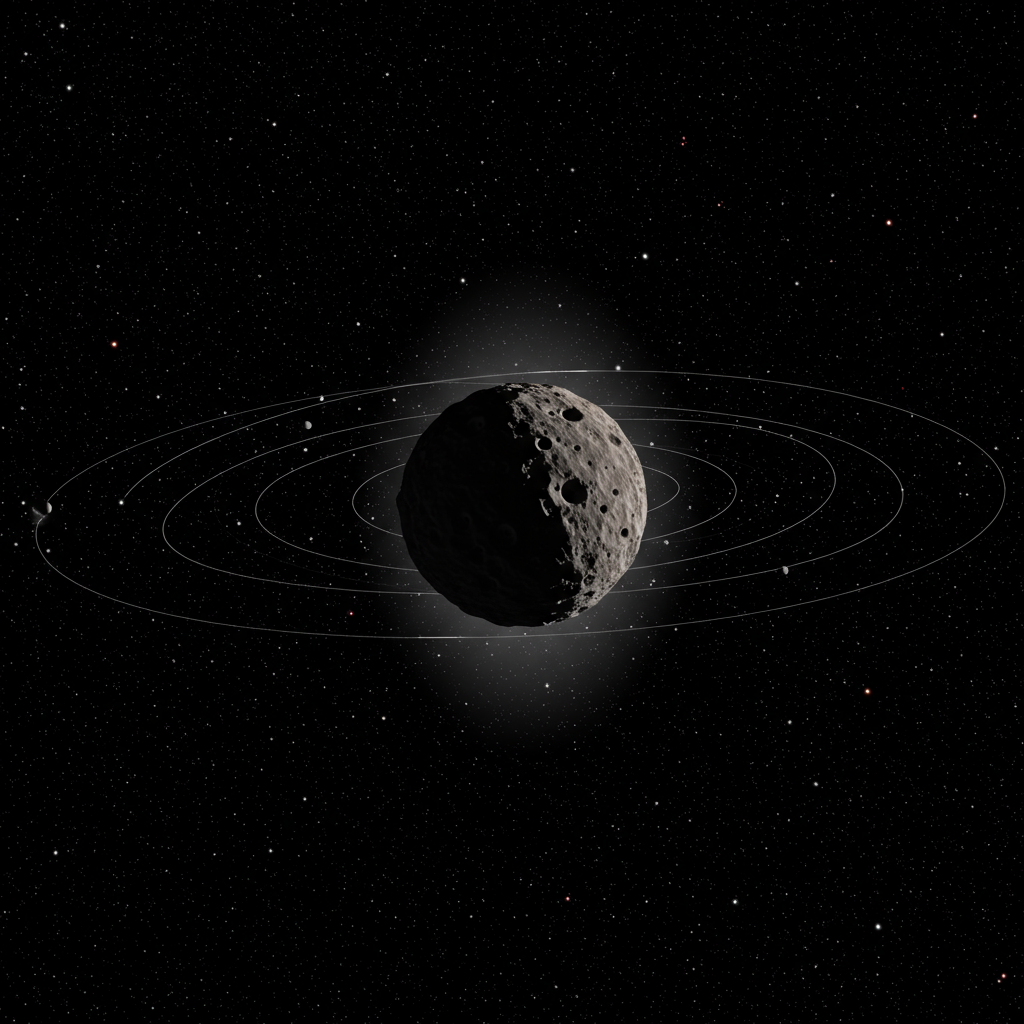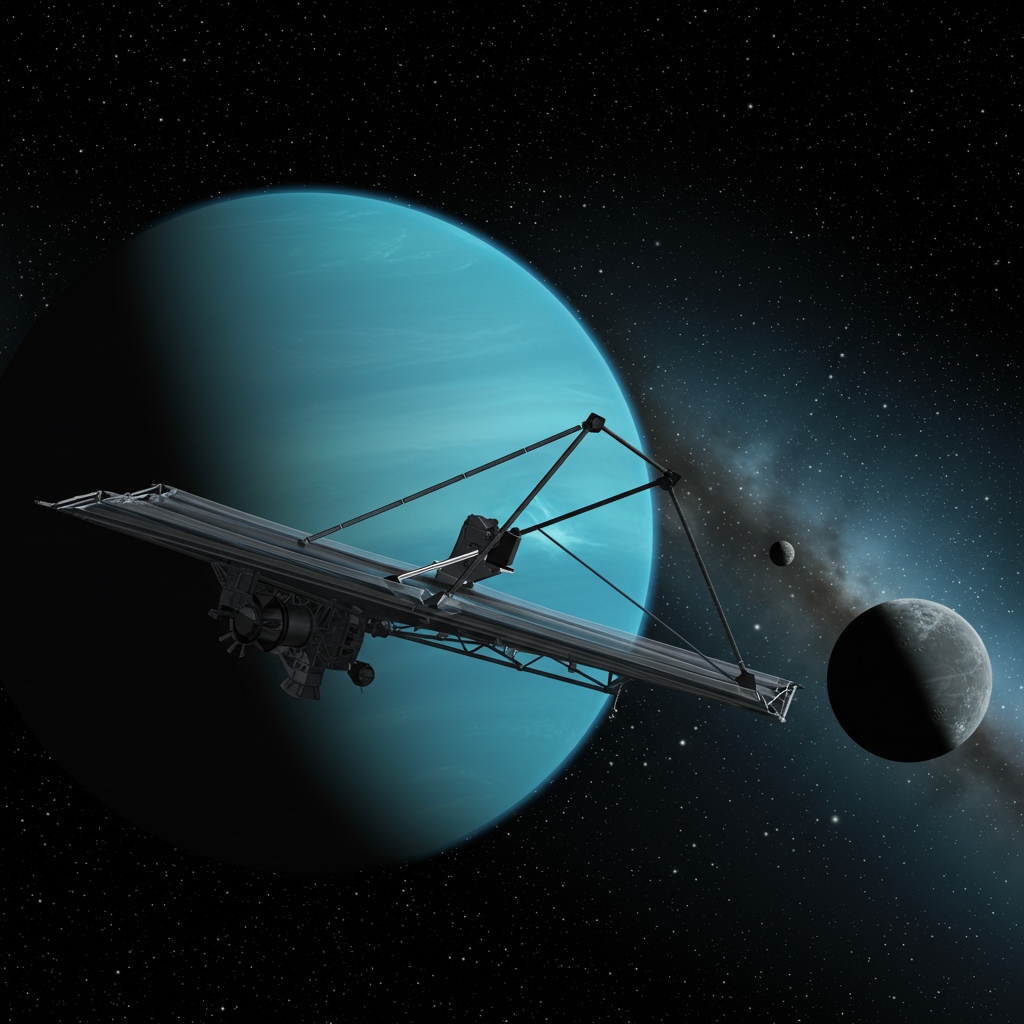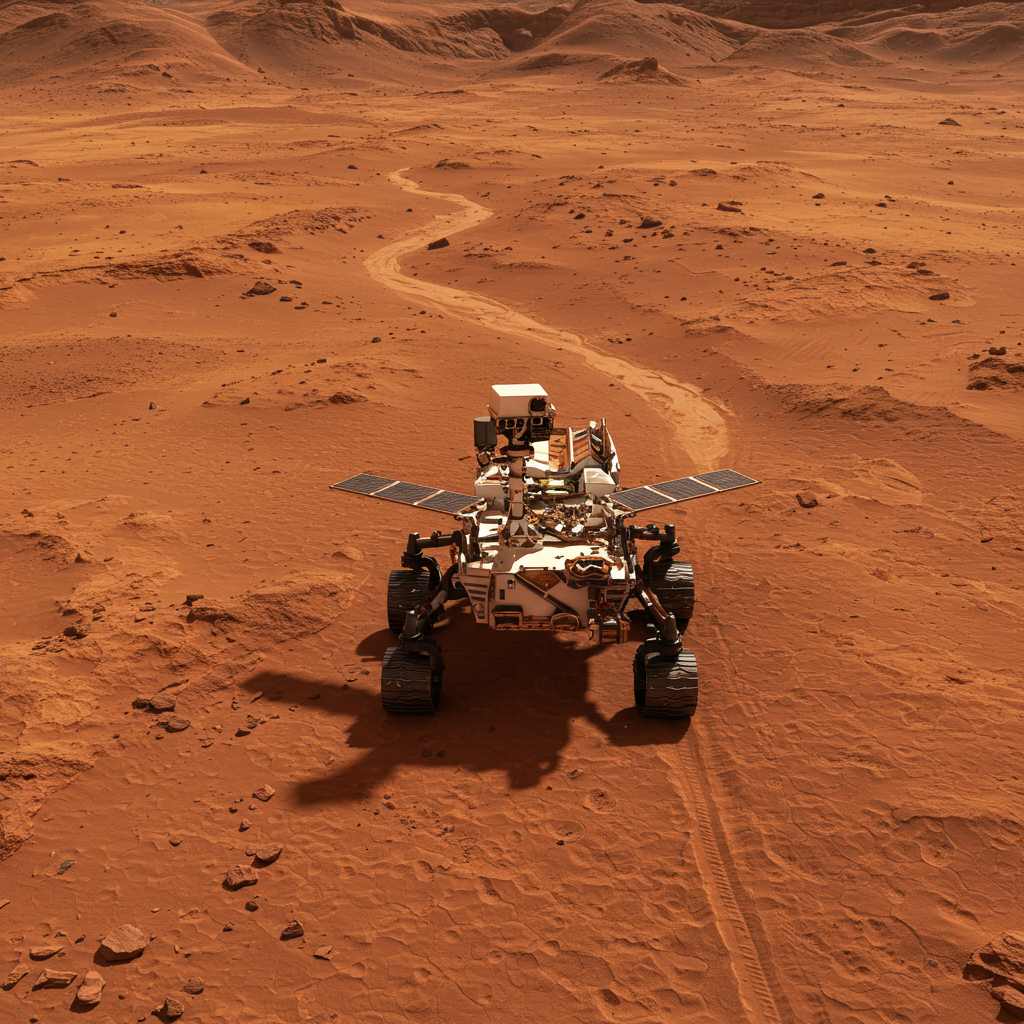The cosmos frequently sends us visitors, but few spark as much intrigue and debate as 3I/ATLAS. This unique interstellar object, the third of its kind ever identified, has captivated astronomers and fueled a fascinating scientific discussion. As 3I/ATLAS recently made its closest approach to the Sun, an event known as perihelion, scientists leveraged this moment to observe celestial mechanics in action, including the subtle effects of gravitational lensing. Yet, beyond this expected phenomenon, a series of baffling anomalies has led some, notably Harvard Professor Avi Loeb, to question whether this object might harbor an extraordinary secret: a technological signature. This article delves into the observations, the theories, and the crucial upcoming data that will help unravel the profound mystery of 3I/ATLAS.
The Sun’s Gentle Bend: Gravitational Lensing of 3I/ATLAS
Einstein’s theory of general relativity predicts that massive objects, like our Sun, bend the fabric of spacetime. This bending causes light from distant objects passing nearby to deflect, a phenomenon known as gravitational lensing. For 3I/ATLAS, as it navigated close to the Sun on October 29, 2025, its light was subtly warped.
Calculations, based on the Sun’s immense mass and the object’s trajectory, predict a deflection angle of approximately 0.27 arcseconds. This tiny shift is indeed measurable by advanced astronomical telescopes. While fascinating, this gravitational lensing effect represents only a small fraction of the puzzling deviations observed in 3I/ATLAS’s path. It sets the stage for a much larger discussion about its true nature.
Calculating the Deflection Angle
To precisely quantify this effect, scientists use Einstein’s formula for light deflection. This involves Newton’s gravitational constant (G), the Sun’s mass (M), the speed of light (c), and the angular separation (A) of 3I/ATLAS from the Sun. Key distances—between the Sun and 3I/ATLAS (Dds), Earth and 3I/ATLAS (Ds), and the Sun and Earth (Dd)—are crucial. Using the perihelion distances (Dd=1 AU, Dds=1.36 AU, Ds=2.36 AU), the resulting deflection of 0.27 arcseconds per degree of angular separation is a testament to the predictive power of general relativity.
Beyond Gravity: The Anomalous Acceleration of 3I/ATLAS
While gravitational lensing is an expected astronomical event, something far more perplexing occurred with 3I/ATLAS. Observations by the Atacama Large Millimeter Array (ALMA) revealed a significant “non-gravitational acceleration” as the object neared the Sun. This means 3I/ATLAS strayed about 4 arcseconds in Right Ascension from its predicted course, moving faster and off-trajectory due to an unknown force.
This unusual deviation has become a focal point of the scientific debate. Conventionally, comets exhibit non-gravitational acceleration due to the “rocket effect” of outgassing—volatile ices sublimating and expelling material, pushing the comet forward. However, the extent and specific characteristics of 3I/ATLAS’s acceleration have raised eyebrows among some researchers.
A Comet or Something More? Loeb’s “Alien Technology” Hypothesis
Harvard Professor Avi Loeb is a prominent voice suggesting that 3I/ATLAS’s unusual behavior could hint at something more advanced than a typical comet. He posits that the non-gravitational acceleration, along with other anomalies, might be a “technological signature of an internal engine” rather than simple cometary outgassing. Loeb’s core argument hinges on the scale of mass loss required for conventional explanations.
For cometary outgassing to account for the observed acceleration, 3I/ATLAS would need to shed an enormous amount of mass—at least 10 to 15 percent of its total weight. Such a colossal loss should create a dense, easily observable cloud of gas and debris around the object. If observations in the coming months fail to detect this massive cloud, Loeb argues, then the outgassing hypothesis loses ground, making an artificial propulsion system a more plausible, albeit controversial, alternative. He also points to the comet’s unusual blue color at perihelion as another anomaly, suggesting it could be linked to a “hot engine or a source of artificial light.”
Nine Mysteries Deepen the Enigma
The non-gravitational acceleration and peculiar blue color are not isolated incidents. Loeb identifies a growing list of “anomalies” associated with 3I/ATLAS, making it an unprecedented interstellar visitor. These nine unique characteristics cumulatively present a compelling, if circumstantial, case for further investigation:
Retrograde Trajectory Alignment: Its backward orbit aligns with the ecliptic plane within 5 degrees, an event with only a 0.2% probability.
Persistent Sunward Jet: Unlike typical comets, 3I/ATLAS displayed a genuine sunward jet (an anti-tail) that wasn’t an optical illusion, defying common cometary behavior.
Exceptional Mass and Speed: It’s significantly more massive than both 1I/Oumuamua and 2I/Borisov, while also moving faster, with a combined likelihood of less than 0.1%. Fine-Tuned Arrival: Its orbital path brought it within tens of millions of kilometers of Mars, Venus, and Jupiter, making it unobservable from Earth at perihelion—a coincidence with only a 0.005% likelihood.
Unusual Chemical Composition: Its gas plume shows a high nickel-to-iron ratio and an unprecedented nickel-to-cyanide ratio, far exceeding any known comet (likelihood below 1%). This could suggest industrially produced alloys.
Low Water Content: Only 4% of its mass consists of water, a primary component of most familiar comets.
Extreme Negative Polarization: This optical property is unprecedented for comets, including 2I/Borisov, with a likelihood below 1%.
"Wow! Signal" Coincidence: It arrived from a direction within 9 degrees of the famous "Wow! Signal" source.
Rapid Brightening and Blue Color: Near perihelion, it brightened faster than any known comet and appeared bluer than the Sun, which is atypical for a cold cometary surface that usually scatters redder light.
If a massive gas cloud is not observed in the coming months, Loeb suggests this would constitute a tenth anomaly, further challenging conventional cometary explanations.
The Scientific Counter-Argument: Natural Explanations Persist
While Loeb's hypotheses are provocative, the broader scientific community largely maintains that 3I/ATLAS, despite its unusual features, remains consistent with a natural origin. Experts like Darryl Seligman and Megan Schwamb emphasize that non-gravitational accelerations are common for comets. These "rocket-like recoils" are simply the result of volatile ices sublimating from the comet's surface.
For instance, 1I/Oumuamua, the first interstellar object, also exhibited non-gravitational acceleration without a visible “dust comae.” This phenomenon is also seen in “dark comets” within our own solar system. Scientists propose that even compositional differences, such as the high nickel content, could be explained by 3I/ATLAS forming in a different stellar system with unique environmental conditions. They stress that a significant body of peer-reviewed literature supports the idea that its properties are consistent with an icy planetesimal ejected from another star system. The PUNCH mission, which tracked 3I/ATLAS, has also confirmed that the object followed its expected trajectory, debunking early speculations about an “Oberth Maneuver” towards Earth.
The Upcoming Acid Test: Key Observations Await
The true nature of 3I/ATLAS hinges on upcoming observations. The next few months are critical for collecting data that could either support or refute the various hypotheses.
Critical Observation Windows
ESA’s JUICE Mission: The European Space Agency’s Jupiter Icy Moons Explorer (JUICE) spacecraft is scheduled to observe 3I/ATLAS from deep space on November 2 and again on November 25. JUICE will use multiple instruments, including a camera, infrared imager, and UV spectrometer, to detect any mass loss. However, due to its distant position, the collected data will not be downloaded until February 2026.
Closest Approach to Earth: On December 19, 2025, 3I/ATLAS will make its closest approach to Earth, at a distance of approximately 269 million kilometers (167 million miles). This presents a prime opportunity for ground-based telescopes, both professional and amateur, to search for the predicted “dense cloud of gas” that would confirm significant mass loss from outgassing.
Venus Encounter: In March 2026, 3I/ATLAS is anticipated to pass within 60 million miles of Venus. This could offer another chance for the JUICE mission to gather more data or even scan for radio transmissions, as suggested by some.
The collective data from these observations will provide crucial evidence to resolve the debate surrounding this remarkable interstellar visitor.
The Philosophy of Discovery: Data Over Dogma
Amidst the scientific debate, the underlying philosophy of scientific inquiry comes to the forefront. Avi Loeb champions a rigorous, data-driven approach, arguing that “Scientific truth is not decided by authority or popularity but by attention to data.” This sentiment is echoed by supporters who commend his “fearless approach to scientific inquiry” and willingness to consider unconventional explanations when anomalies arise.
The journey to understand 3I/ATLAS is a vivid illustration of how science progresses—through observation, hypothesis, debate, and, ultimately, through the rigorous collection and analysis of empirical data. The scientific community eagerly awaits the verdict of the telescopes, which will ultimately guide our understanding of this perplexing interstellar phenomenon.
Frequently Asked Questions
What is the primary mystery surrounding the interstellar object 3I/ATLAS?
The main mystery of 3I/ATLAS centers on its “non-gravitational acceleration” observed during its closest approach to the Sun. This means it deviated from its gravitationally predicted path, moving faster than expected. Additionally, its unusual blue color at perihelion and a list of nine other anomalies have led to speculation. While mainstream science attributes these to cometary outgassing from unique volatile ices, some, like Avi Loeb, propose the possibility of an artificial origin or an internal propulsion system.
When and how will scientists further observe 3I/ATLAS to resolve its mysteries?
Scientists have crucial observation windows ahead. The European Space Agency’s JUICE mission is observing 3I/ATLAS in early November and late November, with data expected by February 2026. Most significantly, 3I/ATLAS will make its closest approach to Earth on December 19, 2025. This allows ground-based telescopes to search for a massive gas cloud, which would support the natural outgassing theory. If no such cloud is found, the artificial origin hypothesis gains more traction.
What is the scientific community’s prevailing view on whether 3I/ATLAS is an alien spacecraft?
The consensus in the broader scientific community is that 3I/ATLAS is likely a natural icy planetesimal originating from another star system, exhibiting properties consistent with cometary behavior. While acknowledging its unusual characteristics, experts point to known phenomena like non-gravitational acceleration in other comets (including `Oumuamua) and the potential for unique chemical compositions based on its formation environment. The theory of an alien spacecraft, while intriguing, is largely viewed as lacking sufficient direct evidence to date.
Conclusion
The interstellar object 3I/ATLAS stands as a captivating enigma in our solar system. Its gravitational lensing by the Sun provided a predictable display of celestial mechanics, but its anomalous non-gravitational acceleration, unusual blue hue, and a host of other perplexing characteristics have ignited a profound scientific debate. While some, like Avi Loeb, ponder the possibility of an engineered object, the majority of the scientific community leans towards a natural cometary explanation, albeit for an exceptionally unusual visitor from another star.
The coming months, particularly the direct observations around its closest approach to Earth on December 19, 2025, will be pivotal. The presence or absence of a massive gas cloud around 3I/ATLAS could significantly sway the discussion. Regardless of its ultimate classification, 3I/ATLAS continues to push the boundaries of our understanding, reminding us that the universe holds endless wonders and mysteries awaiting discovery.




